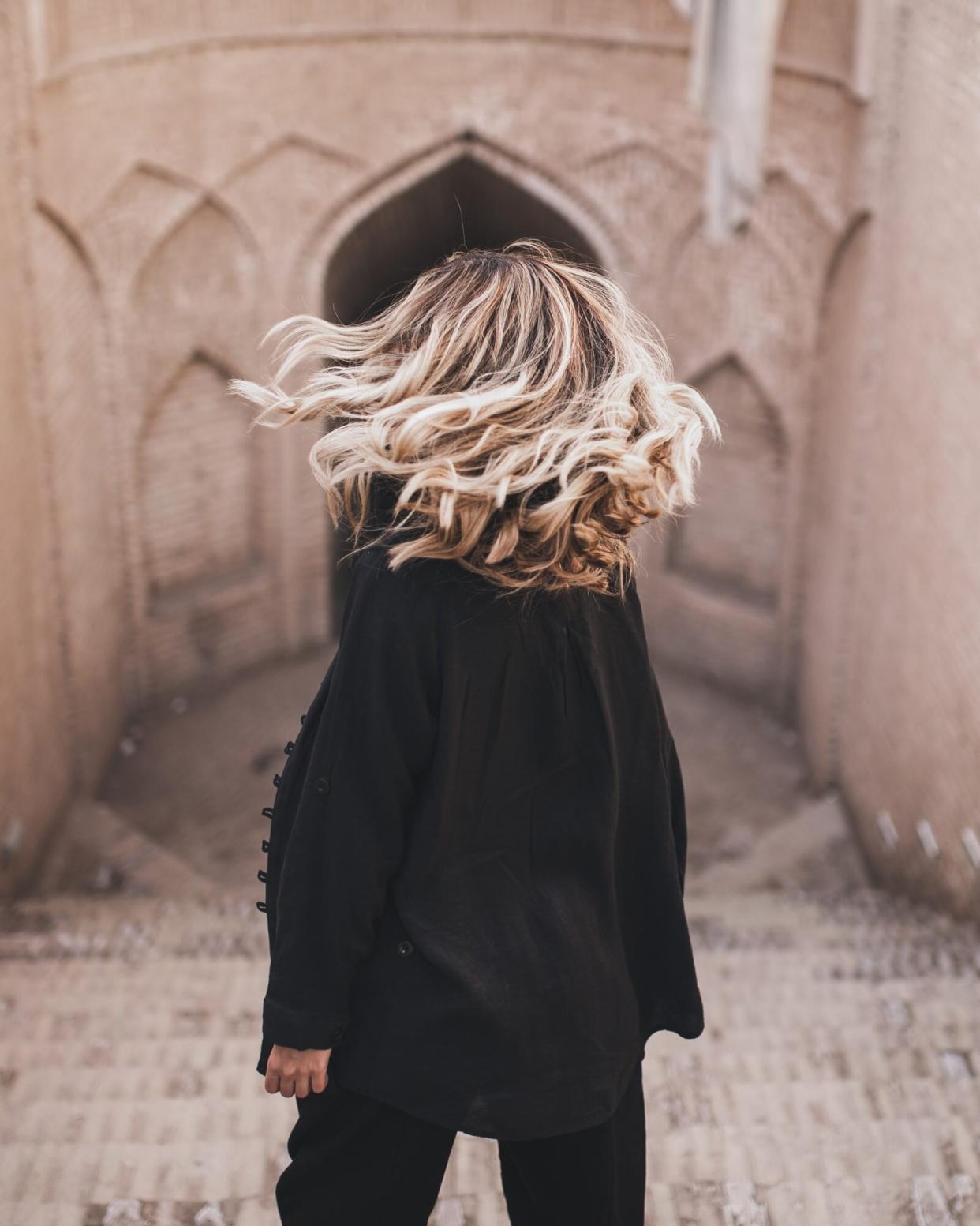What is Balayage and Why Is It the Ultimate Lazy Girl Hair Trend?

Unsplash
As a natural blonde who's had to face the sad reality of darkening hair over the years, I've been wanting dying to lighten my hair. But because of old wise tales and fried-hair horror stories, I didn't want to deal with the upkeep or potential damage of highlights or all-over foil. I just wanted to keep my natural color that was the result of spending every summer outdoors as a kid.
That's when I was introduced to balayage, which has given me a gradual lightening that mimics my sun-kissed hair of years past. Not to mention, it means fewer salon visits for me — which also fits into my budget-friendly lifestyle as a young professional in New York City. If you're thinking about going lighter, balayage may be the best option for you. We spoke with the experts to find out everything you need to know about the super popular, low-maintenance color treatment.
RELATED: Low Maintenance Hair Color Ideas You Can Wear Year-Round
Video: Hair Colors That Experts Say Will Be Everywhere in 2022
What is Balayage?
Praised for the subtle gradation in color from root to tip, balayage has long been considered the ultimate color trend for those of us who would rather pay seasonal visits to the salon over monthly touch-up appointments. The concept is nothing especially new, but is worth revisiting.
"Balayage translates into freehand painting of spaced out highlights that start very fine as they reach your scalp, and become broader as they travel away and reach your ends," explains Caroline Mitgang, hairstylist and colorist at New York City's Paul Labreque Salon.
Jay Martin hairstylist and colorist at Brooklyn-based Gem House Salon says that balayage is usually blended at the top to "create a melted look from roots to ends leaving your natural pigment as the lowlight." He adds that you can expect one to three levels of lift with this technique.
RELATED: 4 Flattering Ombre Trends for Brown Hair
Who Should Get Balayage?
While technically anyone can receive the treatment, Martin suggests that medium to light-haired individuals are the best candidate for balayage. "Someone whose hair isn't too dark naturally would have a very warm result."
Mitgang recommends using your base color to start, and not lifting it too far out of your natural shade range as super-vibrant colors will fade faster than the more subtle end of the spectrum. If you're looking for more of a "funky or loud" vibe, Martin says you can try the formerly popular ombré that is less common now. "Ombré is more of a dipped look with a little bit of blend."
Another reason to opt for balayage is if you're looking to brighten your look without the upkeep that comes with all-over color or highlights, like I was. You can be more lax about the frequency of your services.
RELATED: Lily Collins Debuts a Platinum Blonde Pixie Cut
What's the Maintenance of Balayage?
"Any [color] that's not too far off from what grows out of your head will be the most low-maintenance," Mitgang says. With balayage, "you're not usually changing the root or base color of your hair, so it works in your favor since it won't create a harsh line," she advises.
Martin adds that balayage can be built on, so if you want to achieve a lighter look, you can go several times a year. But if you're just looking to "add some natural dimension," every six to eight months will suffice. But note that each appointment can take several hours, and you'll want to check the prices with your salon beforehand as that can add up.
Because of the low-maintenance nature of this coloring service, Martin says it's somewhat healthier for your hair. But he does stress that it is still a lightening treatment, and like all dyes and bleach jobs, can cause damage. To maintain freshness and shine, Martin suggests receiving a gloss or toner treatment in between coloring sessions.

